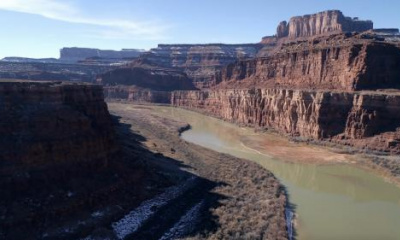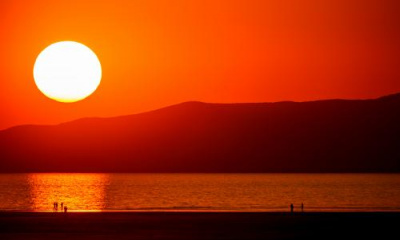SALT LAKE CITY — The Church of Jesus Christ of Latter-day Saints has redesigned the landscape outside six of its Utah meetinghouses and is working to complete a seventh as it seeks to move forward with new conservation goals first outlined last year at the height of the state's severe drought.
Crews redesigned the landscape outside of churches in Castle Dale, Clearfield, Ogden, Salt Lake City and St. George in recent months and are close to doing the same at another meetinghouse in Lehi as a part of a water conservation pilot program.
In all seven cases, irrigation systems have or will be adjusted while drought-tolerant, water-wise and native plants were or will be planted outside of the building in an effort to cut back on traditional lawns.
Officials say the measures aim to "significantly" reduce water consumption, though it's unclear how much water will be saved. Jenica Sedgwick, the church's sustainability manager, said the church plans to review data from the pilot project — and "other ongoing projects" — over the next two years before moving forward with other landscaping plans.
"Water conservation in this state is a critical issue for all of us and it's certainly something the church is concerned about," she said in a statement Tuesday. "It's an important part of our broader sustainability efforts, especially with concerns regarding the water levels of the Great Salt Lake."
Bishop W. Christopher Waddell, of the church's Presiding Bishopric, announced in March the church would enact new water conservation plans moving forward, even as the state's prolific snowpack helped boost Utah out of its severe drought. The plan was unveiled days after leaders said they would donate 5,700 water shares to send more than 20,000 acre-feet to the Great Salt Lake every year, helping the lake after it hit an all-time low in 2022.
Last year, as drought conditions wore on across the West, the church announced it would seek to cut back on watering lawns and landscapes at temples, meetinghouses and other buildings across the region.
Latter-day Saint officials explain landscapes outside of new meetinghouses are now being completed to be "relevant to the water availability in those regions," on top of the pilot program. For example, they say lawns are now typically capped at 35% of the landscape area, while mulch, plants and trees cover the rest. In some desert areas, such as parts of Nevada, there is no lawn at all outside of the buildings.
Sedgwick said more projects are in the pipeline, especially as the pilot program helps officials understand what's possible and effective, and how much money it will cost.
David Wright, a landscape architect at the church's Meetinghouse Facilities Department, adds it's also about finding a "sweet spot" between conservation and a landscape that complements the surrounding neighborhood.
"Ultimately, we would like to fit within the neighborhood and not be too over-the-top where we're shocking the neighbors," he said. "We want to do something that's acceptable."
Nearly 10% of Utah — a section across its eastern border with Colorado — remains in moderate drought even after the past winter's record snowpack and a solid summer monsoon season. About 17% is listed as "abnormally dry," according to the U.S. Drought Monitor. It's still considerably better than this time last year when about 90% of the state was listed in severe drought.
While state and local water experts praised the "unexpectedly great" 2023 water year that eased drought conditions, they also say they believe water conservation will continue to play a vital role in Utah's future because it is the second-driest state in the nation. Water-wise landscaping is considered one of the many ways to cut back on water consumption.
"It's important for everyone to be mindful of their irrigation practices," said Utah Division of Water Resources director Candice Hasenyager, back in August. "Conservation is still a top priority in order to ensure responsible water usage."







